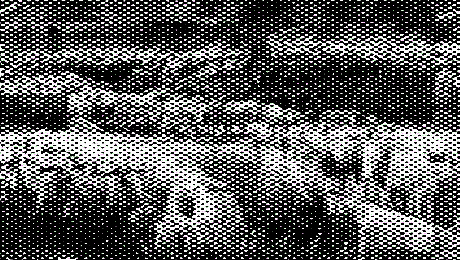This is a supplement to “Pedagogies of the Senses: Multimodal Strategies for Unsettling Visual Anthropology” by ETHIRAJ GABRIEL DATTATREYAN AND ISAAC MARERRO-GUILLAMÓN. Read the article here.
In “Pedagogies of the Senses,” Dattatreyan and Marrero-Guillamón argue that critique isn’t enough to unsettle the affective force of the colonial imagery found in visual anthropology’s “canon” and colonial archival collections of images. This, they argue, has consequences when we teach and learn the (sub)discipline using these materials, particularly for minoritized students.
In the article, they offer sensorily attuned strategies to teach visual anthropology that they have developed as part of their long-term pedagogical praxis to address/engage the coloniality of the discipline. In this teaching supplement, they invite you to experiment with these strategies and create new ones with your students.
Classroom Activity and Discussion Questions
Activity 1
In class either choose one of these two films: Dead Birds (Robert Gardner 1963, 85 mins), Sweetgrass (Lucien Castaing-Taylor and Ilisa Barbash 2009, 115 mins) or select another from a list that you create which, broadly, falls into the category of observational cinema/sensory ethnographic film.
When playing back an excerpt of the film, mute the sound. Repeat the same process, this time leaving only the soundtrack for your students to hear. Ask your students to engage with the following questions:
What sorts of expectations of access to the world depicted in the film become observable when we no longer can hear or see the narrator or the subject?
Who might be imagined as the normative viewing/listening subject for this film when we only listen or only see?
Preview for Dead Birds (Robert Gardner 1963)
Film available here.
Preview for Sweetgrass (Lucien Castaing-Taylor and Ilisa Barbash 2009)
Activity 2
The article discussed refusal, redaction, and opacity as strategies to protect those violently depicted in colonial-era photography and to disrupt the expectations, even the entitlement, of seeing. We invite you to use the digital archive of images hosted by the British Museum and ask your students to experiment with the methods we have suggested but also formulate other ways of protection/disruption.
TW: Please be aware that the archive contains an abundance of violent imagery such as objectifying portraits, underage nudes, and pictures presumably taken without consent. The captions that accompany some of these images can also be experienced as violent, racist, and demeaning.
Share the link to the British Museum’s large photographic print collection. Use filters and keywords so that students can explore the collection and create first a selection of photographic material to work with. You may suggest to them, for instance, they establish a date range, select an ‘ethnic group’, or a geographical delimitation. You may also try how keywords such as ‘officer’ or ‘empire’ produce alternative ways of navigating the archive.
Ask them to download the image/s they intend to work with, and also their captions if they think they may constitute a viable site of intervention
Suggest that they can either print the images, if they intend to intervene them physically, or else load them within software capable of manipulating images, such as Adobe Photoshop or MS Powerpoint.
Once they have completed their engagement with the images (and captions, if that’s the case), ask them to write a short reflection on the process with the prompt: what, if anything, changed in terms of your relationship with the image?
You may also invite students to create an impromptu ‘exhibition’ of their interventions and use the collective contents to engender an in-class discussion that engages:
The colonial violence of the archive
How strategies of intervention might/might not shift the way we can experience and engage with it.
Activity 3
The article discussed creating an alternate visual anthropological canon, one that foregrounds the work of postcolonial and diasporic photographers and filmmakers as sites where students can listen, see, and feel differently in the classroom.
Invite your students to create an alternate collection of photographs to explore in a class session. You may suggest particular photographers, for instance, Malik Sadibe, as Dattatreyan discusses in the article, or (to give a few examples) Homai Vyarawalla, Ruth Motau, and S.H. Lim.
Use the images they share as examples to animate a discussion of what is sensed/felt in these images.
What do we learn by “listening to” (Campt 2017) these images? What becomes audible and for whom?
How does this exercise complicate ideas around knowing and feeling attached to images (e.g. Barthes’ [1993] distinction between punctum and studium)?
The authors would love to see and hear about your experimentations.
Please email them at imarrero@ub.edu and E.Dattatreyan@nyu.edu with any interventions if you wish to share and connect.
References
Barthes, Roland. 1993. Camera Lucida: Reflections on Photography. London: Vintage Classics.
Campt, Tina M. 2017. Listening to Images. Durham: Duke University Press.
UPDATED APRIL 25, 2023

